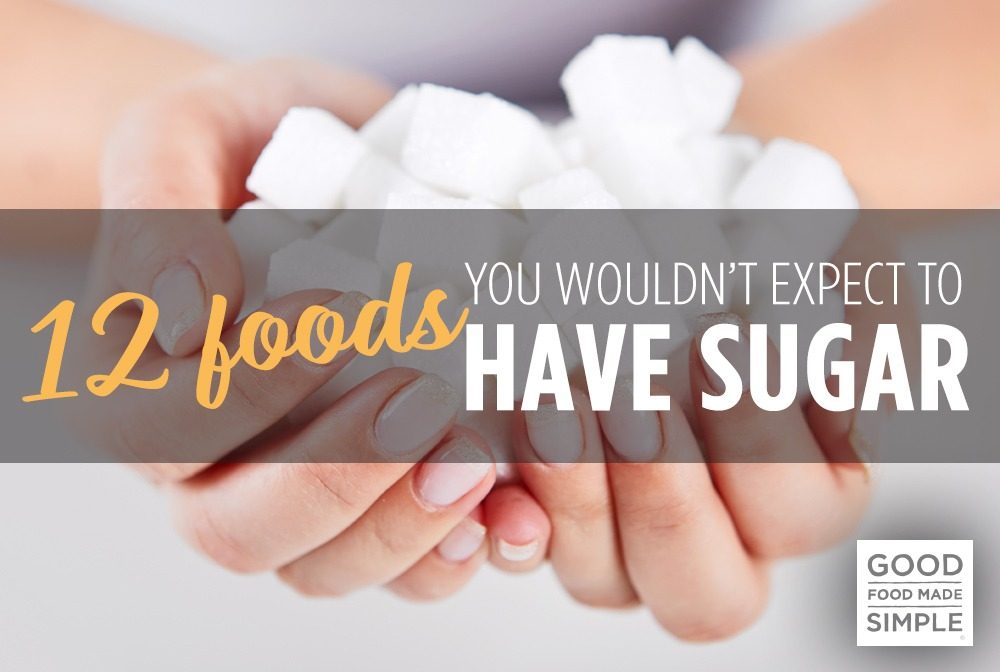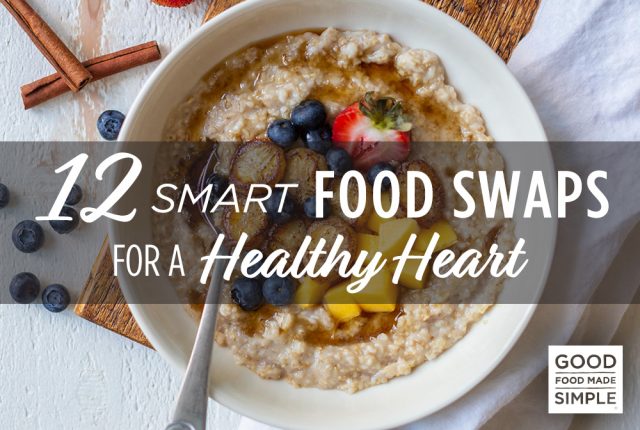
25 Active Date Ideas
While going on dates can certainly be fun, a typical night out with a romantic partner often ends up being focused on eating ...
read more
It’s no surprise that sugar isn’t the best thing for your health. Yet even if people try to reduce their sweet intake from obvious foods — ice cream, baked goods, candy — sugar can sneakily find its way into other foods and beverages. Even ones that don’t even taste sweet!
Consuming too much sugar has been linked to an increased risk of many diseases, including obesity, heart disease, diabetes, and cancer. Too much sugar can also just make us feel blegh, and lower energy levels throughout the day.
The American Heart Association recommends women consume six teaspoons (24 grams) of sugar a day, while men should only have nine teaspoons (36 grams). For context, one can of Coke has 39 grams of sugar. Yikes.
Here are 12 foods and drinks that contain way more sugar than you would think.
Low-fat yogurt
If a food is labeled “low-fat,” it usually has to contain something else to give it a good flavor. Cue: sugar. Many yogurt companies add artificial sweeteners or real sugar to their products; unfortunately, this sugar might show up on the ingredient list even before the actual fruit. Make sure to read the label carefully when buying yogurt. Your safest bet is to purchase plain yogurt and sweeten it yourself with fresh fruit and a drizzle of honey.
Barbeque sauce
You might not think that a savory sauce for meat would have sugar, but alas. Barbeque sauce is usually made with brown sugar. To make matters worse, this sauce is typically made with ketchup too, which also contains sugar! Consider making your own bbq sauce at home; there are many recipes online that will omit the sneaky, sweet ingredient.
Ketchup
Speaking of, ketchup also sneaks a hefty amount of sweetness into every bottle. A single tablespoon of ketchup contains one teaspoon of sugar, and chances are we’re dunking more than one tablespoon on our french fries. Be mindful of how much ketchup you’re using and look for natural or sugar-free options at the grocery store.
Fruit juice
While a glass of fruit juice might seem like a healthy choice, the vitamins and minerals don’t outweigh the amount of sugar in each serving. The reason? It takes a lot of fruit to produce a single glass of juice, but you lose a lot of the fiber and other ingredients found in the pulp. In fact, one glass of OJ has the equivalent of four oranges. To limit sugar, skip the juice altogether and eat the real fruit.
Bread
Yep, even bread has sugar. If you read the ingredient list for sliced bread, you’d be surprised to see an incredibly long list, with some servings including six or seven grams of sugar. Bread doesn’t need to be made with more than water, salt, yeast, and flour. The best way to get sugar-free bread is to go straight to the bakery for fresh-baked options versus the packages of sliced bread. If you do get something packaged, look for two grams of sugar per serving or less.
Pasta sauce
Pasta sauce will naturally have a bit of sugar in it, due to the fact that tomatoes contain some sweetness. However, extra sugar is often added to pasta sauce to balance out some of the acidity from the other ingredients. Read the label carefully and look for pasta sauce that has less than seven grams of sugar per serving. If there’s added sugar, skip it!
Granola
When we think of granola, we often think of the hippy snack filled with oats, nuts, and seeds. However, what makes granola taste really good is often the sugar and oil that’s mixed in. What’s worse: granola servings are typically ¼ of a cup, which is a pretty small amount. Before we know it, we’ve blown through four servings of granola and have consumed more sugar than a bowl of Lucky Charms.
Canned soup
What could be unhealthy about canned soup?! A lot, actually. Watch out for the sugar that often sneaks its way into the ingredient list; soups like tomato, sweet potato, squash, or carrot often have added sugar to bring out the flavors of the natural sugars found in these types of veggies.
Nut butter
In a perfect world, nut butter would just be blended nuts with maybe a dash of salt. Yet our shelves are now overflowing with peanut, almond, cashew, and sunflower butter filled with extra sugar and oil. The reduced-fat options usually have even more sugar. For example, reduced-fat Skippy peanut butter has four grams of sugar per serving. Inspect the nutritional label carefully and choose a nut butter with one or two ingredients: the nut and maybe a little dash of salt.
Protein bars
Protein bars might be packed with (surprise!) protein, but that doesn’t mean it is devoid of other ingredients. In fact, some protein bars can have more sugar than a candy bar (what?!). Look for sugar disguised as brown rice syrup on the label, along with sugar alcohols like glycerin and malitol. Bottom line: If the ingredient list is super long on a bar, it’s usually packed with artificial sugars and chemicals that won’t be good for your gut.
Cereal
While granola and protein bars might have more sugar than a bowl of Lucky Charms, that doesn’t mean that Lucky Charms is a healthier choice. Most cereals are loaded with sugar, whether in the form of malt syrup, evaporated cane juice, high fructose corn syrup, or brown sugar syrup. For example, a one cup serving of Raisin Bran (which is supposed to be “healthy,” right?) has 18 grams of sugar. There’s nothing sweet about that.
Frozen dinners
While we’re big on frozen healthy meals, some brands hide a lot of sugar in their entrees. For example, barbecue-flavored and Asian-inspired dinners often have some sort of syrupy teriyaki, sesame, or sweet-and-sour sauce. The food processors used in frozen meals help remove fat and the overall amount of calories, but it’s often replaced with sugar for taste. Read the label carefully before buying a frozen meal, and stick to brands you can trust — like Good Food Made Simple!

25 Active Date Ideas
While going on dates can certainly be fun, a typical night out with a romantic partner often ends up being focused on eating ...
read more
12 Smart Food Swaps For A Healthy Heart
February is American Heart Month, and one of the best ways to maintain good heart health is to watch what you eat. Instead of...
read more
Starting the New Year With the ‘Right’ Mindset
With the holiday finally over and the new year upon us, I’d be shocked if you haven’t thought about New Year's Resoluti...
read more